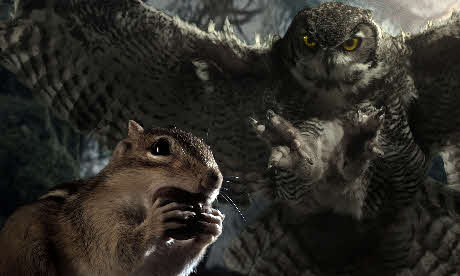
Wildlife photographer Paul Goldstein casts his verdict on controversial BBC nature documentary, Hidden Kingdoms
After scandalous admissions of previous wild scenes being tamer than viewers believed, it appears from Hidden Kingdoms that the BBC Natural History Unit was on probation. The premise for this three part documentary was honest, if a little worthy: that the smaller species have as much right to box office as the signature ones. Deep down though, ask any animal fan if they would prefer to watch a dung beetle or a hunting lion and I know what almost all (except those consumed by a virulent strain of itinerant wildlife one-upmanship) will say.
So we have the ruse, piously conceived, what it needed was something to sex it up and its filming could not be faulted – fluid, but also extraordinarily vivid. But, as their CV is so blotted by past misdemeanours – and pretending scenes (or photos for that matter) are wild when they are not is as close to wildlife heresy as you can get – they then insisted on telling us the tricks in an extended glossary.
This was divisive in the same way as the successful but controversial magicians Penn and Teller are, but it does elicit strong opinions and there is no harm in that. In its favour was that the techniques on display were innovative and gleefully explained in comparison to the Planet Earth and Frozen Planet sequences where smug cameramen tell us how much better their jobs are than most of ours.
Inevitably, the series was narrated by Stephen Fry, who was, well, Stephen Fry: a steady home-county companion who perhaps could have speeded his cadence from 33 to 45 on occasion. Lines like “a falling acorn becomes a meteor” are just silly but surely the venerable narrator was not responsible for writing this sort of bilge. Nor for Carry On lines like “he’s so focused on his nuts he doesn’t notice us” or indeed the Miss World mission statement “the world is full of danger, but what would life be without a challenge.” None of this was helped by inclusion, yet again, of a puerile soundtrack. When there was humour it was Tom and Jerry, when danger, Indiana Jones.
So, the bountiful highlights: the Hawker Siddeley rhinoceros beetle was probably just pipped by the base jumping Gecko. I had sympathy for that spider stumbling in the red-light district. The sengi’s housework was endearing, and the tag team of Harris Hawks, terrifying, and there was a lot of work to show us owls and pussy-cats. Was it over-edited, yes, massively so, but this was the point, because to film this purely on location and harvest the same footage would have taken at least another year and certainly another fifty crew.
Worth the license fee, oh yes. Worth seeing again, I doubt it, although I have already rewound the Sisyphean dung beetle on the vertiginous sandstone cliff many times. I don’t actually mind the crafty editing and respect the atonement for past trespasses, sorcery and subterfuge. It is the subjects that I struggle with. So many times people chunter on about the ‘Little Five’ in Africa, when they are just trying to sound intelligent and different. It doesn’t wear with me. Neither does the ethically catastrophic term ‘Big Five’ which is nothing more than a mainstream butchers phrase. But give me a real leopard over a leopard tortoise any day. Does that make me a faunal philistine? Probably.